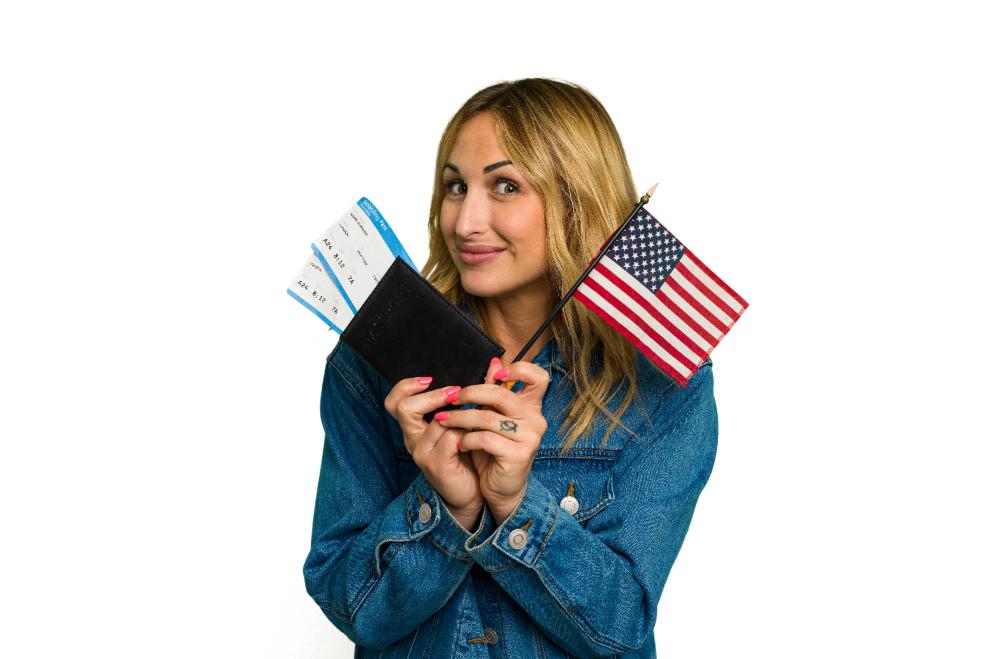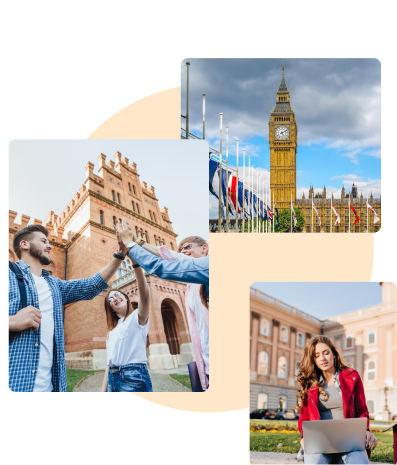USA Student Visa Requirements: Types, Application Process, and Costs
-
J1 Visa USA, Education in USA

Table of Contents
Types of USA Student Visa Requirements and Their Basic
Scroll here ↓Steps to Apply for a USA Student Visa
Scroll here ↓Students should bring the following documents to the visa interview:
Scroll here ↓US Student Visa Processing Time and Fees
Scroll here ↓Visa Interview Process
Scroll here ↓What to Do If Your Visa Is Denied
Scroll here ↓Student Dependent Visas (F2 and M2)
Scroll here ↓Updates and Opportunities for International Students
Scroll here ↓Conclusion
Scroll here ↓Types of USA Student Visa Requirements and Their Basic
F-1 Student Visa
The F-1 visa is the most common type of student visa in the USA, designed for international students attending full-time academic programs at universities or other educational institutions certified by the Student Exchange and Visitor Program (SEVP). This visa allows students to pursue degree programs such as undergraduate, graduate, or doctoral studies.
To qualify for the F-1 visa, students must first be accepted by an SEVP-certified institution. The basic USA student visa requirements for an F-1 visa include:
- A valid passport
- Proof of academic qualifications, such as transcripts
- A certificate of English proficiency (TOEFL or IELTS)
- Financial evidence showing the ability to cover tuition fees and living expenses
- Health insurance to cover medical expenses, if required
F-1 student visa holders can work part-time on campus and may also apply for optional practical training (OPT) or curricular practical training (CPT) to gain work experience related to their field of study.
M-1 Student Visa
The M-1 visa is designed for students enrolled in non-academic or vocational training programs, such as technical courses. M-1 visa holders are not permitted to work while studying and must demonstrate that they have sufficient funds to cover both tuition fees and living expenses for the duration of their stay.
To qualify for an M-1 visa, applicants must:
- Be accepted by a vocational or technical institution
- Be over the age of 18
- Provide proof of sufficient financial resources
- Hold a valid passport
- Pass an English proficiency test
Like F-1 visa holders, M-1 students must apply for an I-20 form from their institution, which is required to complete the visa application process.
J-1 Visa
The J-1 visa is specifically intended for students, researchers, or professionals who wish to participate in educational exchange programs in the United States. This visa is commonly used for internships, research opportunities, and practical training. J-1 visa holders are typically sponsored by an organization and are allowed to work in roles related to their studies or training.
To apply for a J-1 visa, candidates must meet the following USA student visa requirements:
- Be over 18 years of age
- Be proficient in English
- Hold a valid passport
- Have no criminal record
- Provide proof of health insurance
Additionally, J-1 visa holders are required to return to their home country for at least two years after completing their program, unless they qualify for a waiver.
Steps to Apply for a USA Student Visa
Meeting the USA student visa requirements & applying for it involves several steps that students must complete in a timely and organized manner. Here's an overview of the process:
1. Acceptance into an SEVP-Certified Institution
The first step is to apply and be accepted by a SEVP-certified institution. Once accepted, the institution will issue a Form I-20 (for F-1 and M-1 visa applicants) or a Form DS-2019 (for J-1 visa applicants). This form is essential for applying for a student visa.
2. Payment of SEVIS Fee
The next step is to pay the Student and Exchange Visitor Information System (SEVIS) fee, which is required for all student visa applicants. The fee must be paid at least three days before submitting the visa application. The SEVIS fee for F-1 and M-1 visa applicants is $350, while J-1 visa applicants pay $220.
3. Completing the Visa Application
Applicants must then complete the online visa application form DS-160. This form requires personal details, educational background, and a recent passport-sized photograph. After completing the form, students must print the confirmation page, which includes a barcode that will be needed during the visa interview.
4. Paying the Visa Application Fee
Once the DS-160 form is completed, students must pay the visa application fee, also known as the Machine Readable Visa (MRV) fee. The fee is $160 for non-petition-based visas. Payment can be made online, over the phone, or in person at an authorized bank. It is crucial to keep the payment receipt, as it is required for the visa interview.
5. Scheduling and Attending the Visa Interview
The final step in the us visa application process is to schedule a visa interview at the nearest U.S. embassy or consulate. During the interview, the consular officer will assess the applicant's eligibility for the visa, including their financial stability, academic background, and intent to return to their home country after completing their studies.
Students should bring the following documents to the visa interview:
- A valid passport
- The DS-160 confirmation page
- A recent passport-sized photo
- Proof of payment for the visa application
- Form I-20 or DS-2019
- Proof of financial resources
- Academic transcripts and certificates
After the interview, applicants may be asked to provide additional documentation or undergo administrative processing, which can extend the processing time.
US Student Visa Processing Time and Fees
The processing time for a USA student visa requirement typically takes 3-5 weeks, but it can vary depending on the applicant's country of origin and whether additional administrative processing is required. After approval, the visa will be issued and delivered within a few days.
Here is a summary of the main fees associated with the USA student visa process:
Fee Type | Cost in USD |
Non-petition-based nonimmigrant visa | $160 |
SEVIS Fee for F-1/M-1 visa applicants | $350 |
SEVIS Fee for J-1 visa applicants | $220 |
English Language Requirements
International students applying for a USA student visa must demonstrate proficiency in the English language. This can be done by providing scores from standardized tests such as the TOEFL, IELTS, or Duolingo. Some universities also require scores from other tests like the GRE, GMAT, or SAT.
Visa Interview Process
The visa interview is a crucial part of the application process. During the interview, the consular officer will ask questions to assess the applicant's academic background, financial situation, and plans for the future. The officer will also evaluate the applicant's intent to return to their home country after completing their studies.
In addition to answering questions, applicants must undergo a fingerprint scan and may be asked to provide additional documents, such as financial statements or transcripts.
If the visa is approved, the applicant will be informed of when and how their passport and visa will be returned. If the visa is denied, the applicant will be informed of the reason for the denial and may be eligible to reapply with additional evidence.
What to Do If Your Visa Is Denied
If a student's visa application is denied, it is often due to insufficient evidence to prove financial stability, academic eligibility, or intent to return home after studies. In most cases, the consular officer will provide information on how to apply for a waiver or reapply with additional documentation.
Students who reapply must submit a new visa application and pay the visa fee again. It is important to address the issues that led to the denial in the first application.
Student Dependent Visas (F2 and M2)
Spouses and children under 21 of students with F-1 or M-1 visas can apply for dependent visas (F2 and M2). F2 visa holders are not allowed to work or enroll in full-time academic programs, but children may attend school. It is important to note that dependent visa holders cannot accept employment during their stay.
Updates and Opportunities for International Students
In recent years, there have been several updates to the USA student visa process, including changes in interview slots and eligibility for Optional Practical Training (OPT). For example, students on F-1 visas studying STEM subjects can apply for a 24-month extension of their OPT, allowing them to work in the U.S. for up to 36 months after graduation.
Conclusion
In summary, fulfilling the USA student visa requirements is crucial for Indian students who want to study in the U.S. The process may seem complicated with different visa types and requirements, but it opens doors to valuable academic opportunities.
At GlobalGrads, we make this process easier by guiding you through visa applications and university admissions. Our expert mentors help you focus on your studies while ensuring your overseas education is affordable and hassle-free.
By focusing on what really matters—your studies and future career—GlobalGrads is your trusted partner in making your American academic dreams a reality. Let us help you guide with the U.S. study visa process with ease and confidence, so you can concentrate on building the future you’ve always expected!

Find out Universities in the USA where you get Admission
Check your Admit Eligibility NowRecent Blogs
-

MiM vs MBA: Which MBA Alternative Gives the Fastest Career Lift?
09 November, 2025 Read More › -

How Do You Qualify for a US Student Visa? — A GlobalGrads Guide
23 October, 2025 Read More › -

Study Abroad Scholarships for Indian Students
23 October, 2025 Read More ›






